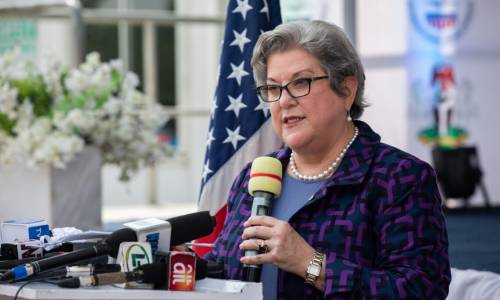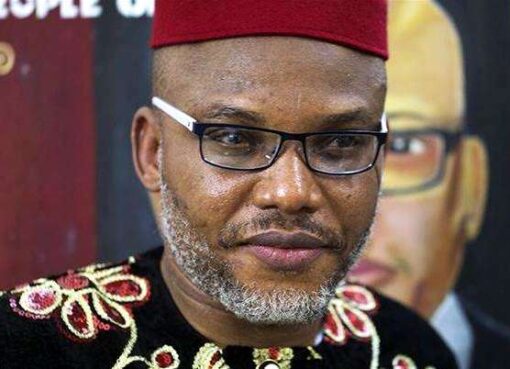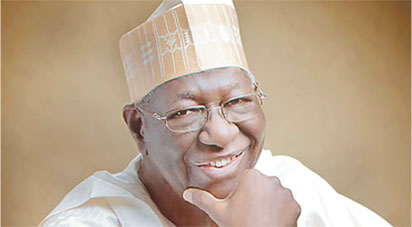• Patient Spends Between N20, 000 To N150, 000 Monthly To Stay Alive
• Country Has Highest Number Of Diabetics In Sub Saharan Africa
• Diabetes Kills More People In Nigeria Than COVID-19, TB, HIV/AIDS, Cancer Combined – EMSON
• 100 Years After Discovery, Insulin Still Out Of Reach Of Many
As the world, today, marks the World Diabetes Day (WDD), experts are worried that no fewer than six million Nigerians – one in ten adults – are living with diabetes, even as the numbers are expected to double by 2030, with the nation facing a situation akin to a “ticking time bomb.”
The theme of this year’s celebration – “Access to Diabetes Care,” is aimed at raising awareness around the fact that millions of people living with diabetes around the world do not have access to diabetes care. Diabetic patients require ongoing care and support to manage their condition and avoid complications. Nine in 10 of diabetics have the Type 2 variant, a lifestyle disease linked to obesity and unhealthy living. The Type 1 variant is an unpreventable autoimmune disease that develops at childhood.
The President, Endocrine and Metabolism Society of Nigeria (EMSON), and consultant endocrinologist at the College of Medicine, University of Lagos (CMUL)/Lagos University Teaching Hospital (LUTH), Prof. Olufemi A. Fasanmade, in an exclusive interview with The Guardian said the burden of diabetes mellitus in Nigeria was increasing steadily and sufferers spend between N20, 000 and N150, 000 monthly to stay healthy and alive.
An endocrinologist is a physician who specialises in treating disorders of the endocrine system, such as diabetes, hyperthyroidism, and many others.
As the epidemic of diabetes continues, it also came to light yesterday, that 100 years after its discovery, insulin is still out of the reach of many that are living with diabetes. The disturbing news is contained in a new report published by the World Health Organisation (WHO) in the lead-up to the 2021 WDD.
As the soaring rate of poverty in the country also ensures that insulin is out of the reach of the poor, a community pharmacist and the Director General, Nigeria Natural Medicine Development Agency (NNMDA), Dr. Samuel Oghene Etatuvie, has said that the agency has a natural method of taking care of the malaise with minimum side effects compared to orthodox pharmaceutical products.
Fasanmade explained that in the 1960s to 1970s, diabetes was found in only 0.5 – one per cent of adults in Nigeria, and in the 1980s -1990s, the figures rose to 1.4-2.2 per cent of adults. But “currently about 5.7 per cent of adults are affected with diabetes, and 10-15 per cent with pre-diabetes. In urban towns and cities, at least one in 10 adults have diabetes, even as 30 per cent of people with hypertension also have diabetes.
“Sadly, the country’s five to six million diabetics is the highest in sub Saharan Africa. It is also higher than the number of death induced tuberculosis, Human Immuno-deficiency Virus (HIV)/Acquired Immune Deficiency Syndrome (AIDS), and COVID-19 put together. Diabetes kills more people in Nigeria than COVID-19, tuberculosis, HIV/AIDS and cancer put together,” Fasanmade said.
Commenting on the cost of living with diabetes, Fasanmade said: “Diabetes is a very costly condition. In Nigeria, a typical patient with it will spend N20, 000 to N30, 000 to properly control it. This is like the minimum and covers medications, blood tests, and clinic attendance. When complications like kidney disease come into the picture, some patients have a monthly expenditure of N100, 000 to N150, 000. In the United States (US) up to $300 billion is spent on diabetes per annum. The figures for total diabetes expenditures in Nigeria are uncertain. One vial of insulin is N6, 000 to N10, 000, and patients use one or two per month. A box of strips for testing blood sugar is about N6, 000 and patients need one or two per month. Some tablets are as cheap as N2, 000 per month and others as high as N30, 000 monthly. Usually patients are on two to three of the drugs.”
On factors fueling increase in the number of diabetic cases, Fasanmade said western lifestyle, smoking/drinking and increasing lifespan were risk factors.
“Western lifestyle is very harmful in that it encourages sedentary life, consumption of calorie-densed food (fast food and soft drinks) and is stressful. Unfortunately, people exercise less nowadays and they resort to cars, cabs, bikes for even the shortest of distances leading to increasing obesity which itself is another risk factor for developing diabetes,” Fasanmade said.
The endocrinologist while admitting that there is no clinically available cure for diabetes, added that there are just few reports of largely impracticable experimental cures such as transplants of whole pancreas, or islet cells of pancreas to people. “But getting a pancreas is not easy and the operation comes with its own challenges,” he said.
He stressed that diabetes like hypertension and many other non-communicable diseases are degenerative, or chronic disease, which has to be managed since they are lifelong conditions. “In future however there may be a cure but presently there is none,” he said.
While regretting that absence of a current population-based national prevalence figure for diabetes in the last 20 years to aid national health planning, policies and financing, Fasanmade said the last true national prevalence of diabetes was given in 1992 as 2.24 per cent. And the prevalence estimates given by the International Diabetes Federation for Nigeria over the years have relied mainly on data extrapolated from other countries with similar socio-demographic characteristics to Nigeria.
“Right now, there is a serious dearth of skilled diabetes personnel across the country,” he said, adding that diabetes research is currently inadequately funded in Nigeria and there is inadequate public enlightenment and support for diabetes prevention and care at all levels.
A new report published yesterday, by the WHO in the lead-up to WDD, highlights the alarming state of global access to insulin and diabetes care, and shows that high prices, low availability of human insulin, few producers dominating the insulin market and weak health systems are the main barriers to universal access.
According to the Director-General of the WHO, Dr. Tedros Adhanom Ghebreyesus: “The scientists who discovered insulin 100 years ago refused to profit from their discovery, and sold the patent for just one dollar. Unfortunately, that gesture of solidarity has been overtaken by a multi-billion-dollar business that has created vast access gaps. WHO is working with countries and manufacturers to close these gaps and expand access to this life-saving medicine for everyone who needs it.”
Insulin is the bedrock of diabetes treatment – it turns a deadly disease into a manageable millions of sufferers. It is also essential in reducing the risk of kidney failure, blindness and limb amputation.
However, one out of every two people needing insulin for Type 2 diabetes does not get it as the disease soars in low and middle-income countries, and their consumption of insulin has not kept up with the growing disease burden.
The report further highlights that while three in four people affected by Type 2 diabetes live in countries outside of North America and Europe, they account for less than 40 per cent of the revenue from insulin sales.
In explaining the access gaps, the report noted that the global market shift from human insulin, which can be produced at relatively low cost, to the pricier analogues (synthetic insulins) is imposing an untenable financial burden on lower-income countries. In general, human insulin is as effective as analogues, but analogues are at least 1.5 times more expensive than human insulins, and in some countries, three times more expensive.
“Three multinational companies control more than 90 per cent of the insulin market, leaving little space for smaller companies to compete for insulin sales. Also, suboptimal regulation and policies, including suboptimal pharmaceutical pricing approaches, weak procurement and supply chain management, insufficient financing to cover demand, and overall weak governance are affecting access to insulin and related devices, such as monitoring and delivery devices, in all countries.”
COMMENTING on the presence of alternatives to orthodox treatment as vast insulin gaps persist, NNMDA DG, Etatuvie said:
“Many of the sufferers are used to using pharmaceutical products. Our belief is that these pharmaceutical products are very expensive and the side effects are usually very high. From research, it has been proven that a family spends between N15, 000-N20, 000 to purchase these drugs, maybe on a daily or weekly basis. With the level of poverty that we have in this country, how is it sustainable? We have a natural method of taking care of these things with minimum side effects.
“We have a product, it’s in tea form, purely developed from the traditional medicine knowledge from the researches. The researches have been carried out throughout the globe, from that we have been able to develop our herbal tea that is used to manage diabetes Type 2. NAFDAC has given us approval; it is safe and good for human consumption.
“We are talking to people who can partner with us and carry out commercialisation of the tea. We want it to be as cheap and readily available as possible. If we as a research institute continue to produce at this level, it might cause maybe N3, 000 to N5, 000, but that is not our focus. Our focus is to make it readily available at an affordable amount as possible. So, we are talking to industrialists and individuals that can push it into the market for people to use,” he said.
THEGUARDIAN






